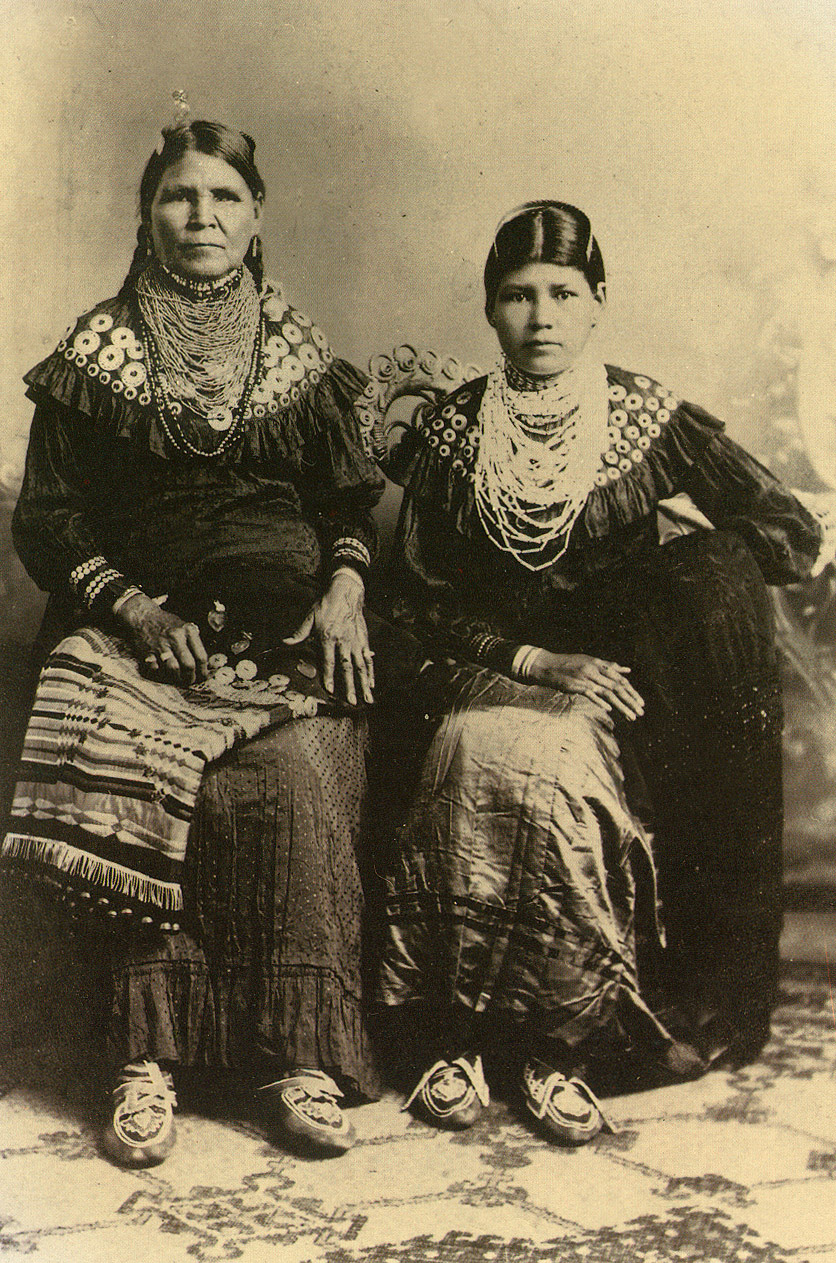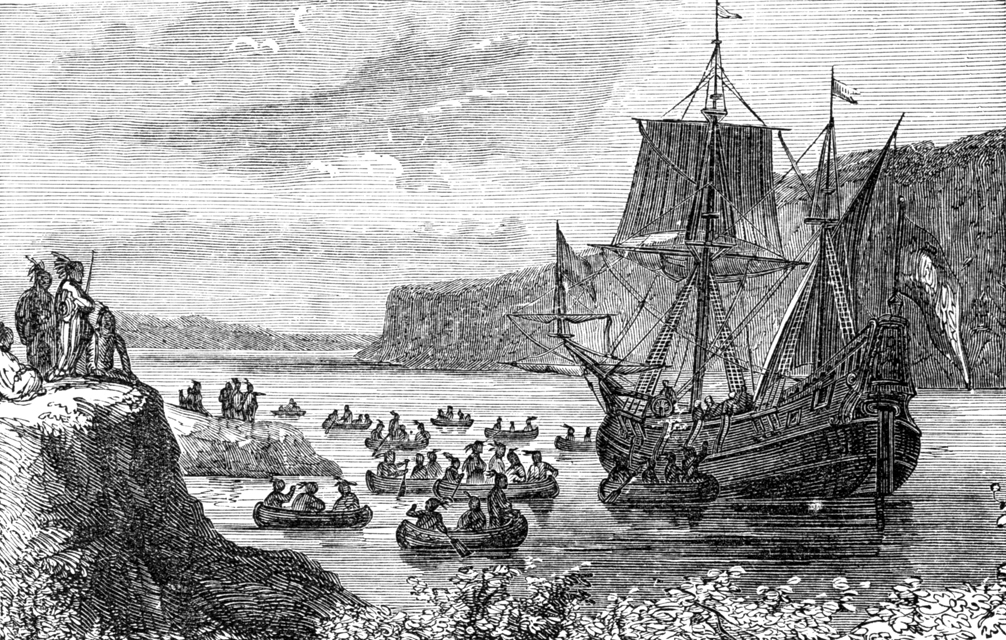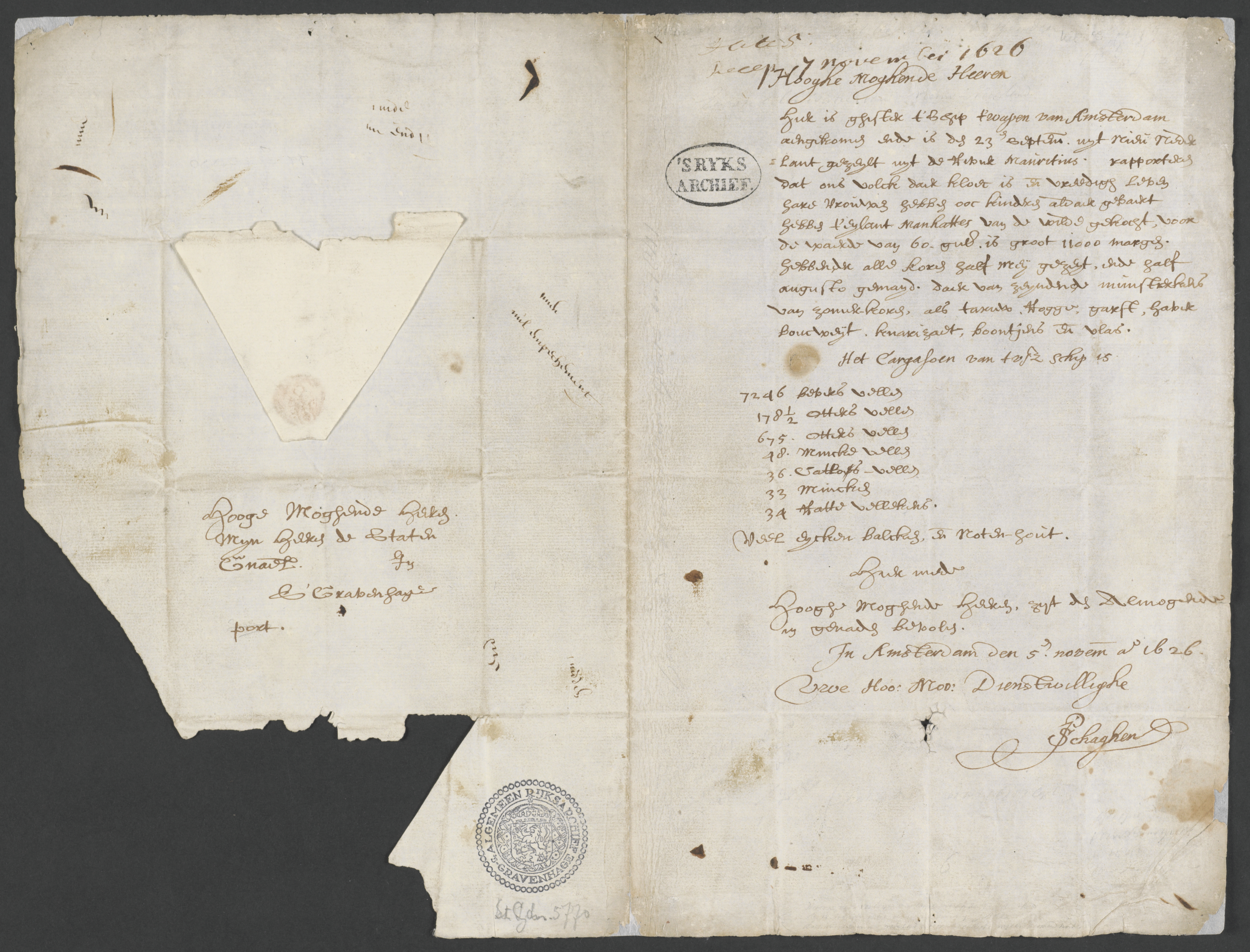|
Rumachenanck Tribe
The Rumachenank were a Lenape people who inhabited the region radiating from the Palisades in New York and New Jersey at the time of European colonialization in the 17th century. Settlers to the provincial colony of New Netherland called them the ''Haverstroo'' meaning ''oat straw'', which became '' Haverstraw'' in English, and still used to describe part of their territory. Like the Tappan, whose territory overlapped, the Rumachenank were a seasonally migrational people, who farmed (companion planting), hunted, fished, and trapped. As all Lenape tribes, they were divided into clans, in this case Wolf, Turkey, and Turtle. They spoke the Munsee dialect of Lenape. They, as well as the Hackensack, Raritan, Wappinger, Canarsee, were collectively known as the River Indians. Those groups living in the adjoining highlands to the west and valley to north have become known as the Munsee, and sometimes the Esopus. The Haverstraws were the tribesmen who had the trouble with Verrazzano ... [...More Info...] [...Related Items...] OR: [Wikipedia] [Google] [Baidu] |
Lenape
The Lenape (, , ; ), also called the Lenni Lenape and Delaware people, are an Indigenous peoples of the Northeastern Woodlands, Indigenous people of the Northeastern Woodlands, who live in the United States and Canada. The Lenape's historical territory included present-day northeastern Delaware, all of New Jersey, the eastern Pennsylvania regions of the Lehigh Valley and Northeastern Pennsylvania, and New York Bay, western Long Island, and the lower Hudson Valley in New York (state), New York state. Today communities are based in Oklahoma, Wisconsin, and Ontario. During the last decades of the 18th century, European settlers and the effects of the American Revolutionary War displaced most Lenape from their homelands and pushed them north and west. In the 1860s, under the Indian removal policy, the Federal government of the United States, U.S. federal government relocated most Lenape remaining in the Eastern United States to the Indian Territory and surrounding regions. The la ... [...More Info...] [...Related Items...] OR: [Wikipedia] [Google] [Baidu] |
Esopus Tribe
The Esopus () were a tribe of Lenape (Delaware) Native Americans who were native to the Catskill Mountains of what is now the Hudson Valley. Their lands included modern-day Ulster and Sullivan counties. The Lenape originally resided in the Delaware River Valley before their territory extended into parts of modern-day New York (including the Catskill Mountains and Lower Hudson River Valley), Pennsylvania, New Jersey, and Eastern Delaware. The exact population of the Lenape is unknown but estimated to have been around 10,000 people in 1600. The Esopus people spoke an Algonquin dialect known as Munsee. The tribe generally lived in small communities consisting of 10 to 100 people. They traveled seasonally and settled mostly in clearings by sources of water, developing diverse agricultural practices. The Esopus people's main crop was corn, but also planted or foraged beans, squash, hickory, nuts, and berries in addition to hunting elk, deer, rabbits, turkey, raccoons, waterfowl, bears ... [...More Info...] [...Related Items...] OR: [Wikipedia] [Google] [Baidu] |
People From New Netherland
The term "the people" refers to the public or common mass of people of a polity. As such it is a concept of human rights law, international law as well as constitutional law, particularly used for claims of popular sovereignty. In contrast, a people is any plurality of persons considered as a whole. Used in politics and law, the term "a people" refers to the collective or community of an ethnic group or nation. Concepts Legal Chapter One, Article One of the Charter of the United Nations states that "peoples" have the right to self-determination. Though the mere status as peoples and the right to self-determination, as for example in the case of Indigenous peoples (''peoples'', as in all groups of indigenous people, not merely all indigenous persons as in ''indigenous people''), does not automatically provide for independent sovereignty and therefore secession. Indeed, judge Ivor Jennings identified the inherent problems in the right of "peoples" to self-determination, as i ... [...More Info...] [...Related Items...] OR: [Wikipedia] [Google] [Baidu] |
Rockland County, New York
Rockland County is the southernmost county on the west side of the Hudson River in the U.S. state of New York. It is part of the New York metropolitan area. As of the 2020 U.S. census, the county's population is 338,329, making it the state's third-most densely populated county outside New York City after Nassau and neighboring Westchester counties. The county seat and largest hamlet is New City. Rockland County is accessible via both the New York State Thruway, which crosses the Hudson River to Westchester via the Tappan Zee Bridge over the Tappan Zee, ten exits up from the NYC border; and the Palisades Parkway, four exits up, via the George Washington Bridge. The county's name derives from "rocky land", as the area has been aptly described, largely due to the Hudson River Palisades. The county is part of the Hudson Valley region of the state. Rockland County is the smallest county by area in New York outside New York City. It comprises five towns, eighteen incorpora ... [...More Info...] [...Related Items...] OR: [Wikipedia] [Google] [Baidu] |
Bergen County, New Jersey
Bergen County is the List of counties in New Jersey, most populous County (United States), county in the U.S. state of New Jersey.Table1. New Jersey Counties and Most Populous Cities and Townships: 2020 and 2010 Censuses New Jersey Department of Labor and Workforce Development. Accessed December 1, 2022. Located in the northeastern corner of New Jersey, Bergen County and its many inner suburbs constitute a highly developed part of the New York City metropolitan area, bordering the Hudson River; the George Washington Bridge, which crosses the Hudson, connects Bergen County with Manhattan. The county lies in the Gateway Region of North Jersey. As of the 2020 United States c ... [...More Info...] [...Related Items...] OR: [Wikipedia] [Google] [Baidu] |
Tappan Tribe
The Tappan were a Lenape people who inhabited the region radiating from Hudson Palisades and New York – New Jersey Highlands at the time of European colonialization in the 17th century. Etymology The exonym ''Tappan'' is likely a derivation of a word or phrase from the Algonquian language Lenape as used by settlers to New Netherland, who spelled it as Tappaen. It is not certain what the Tappan called themselves, but there are a variety of interpretations for the word. One suggestion is that it possibly comes from ''tuphanne'' meaning ''cold water''. Vriessendael, one of the first "bouweries", or homesteads, built in the territory was sometimes called Tappan. The Tappan are recalled throughout their former territory: Lake Tappan is a reservoir on the Hackensack River; the Tappan Zee, widening of the Hudson River and the bridge crossing it; Old Tappan in Bergen County; Tappan in Rockland County. History The Tappan migrated seasonally and engaged in companion planting, hunting, ... [...More Info...] [...Related Items...] OR: [Wikipedia] [Google] [Baidu] |
Okehocking People
The Okehocking (also erroneously attested as the Ockanickon or Crum Creek Indians) were a small band of Unami-speaking Lenape, who originally inhabited an area along the Ridley and Crum Creeks in Delaware County, Pennsylvania. First attested in 1700, the band's name may have derived from the bends in Crum and Ridley Creeks. The group likely numbered between 15 and 25 individuals, and was unusually small for a Lenape band of the time. Colonial pressures forced the band to relocate its summer settlement, leading the band to settle on a vacant tract of land originally deeded to a Quaker settler around 1701. The Proprietary government of Pennsylvania directed surveyors to allot the band a tract along one of the creeks. After petition for land in 1702, they were granted , but were cut off from most of Ridley Creek and may have been granted mostly hilly, unfertile land by the colonists. In 1710, a colonial road was built through the Okehocking land. Although most regional Lenape had ... [...More Info...] [...Related Items...] OR: [Wikipedia] [Google] [Baidu] |
Hackensack People
Hackensack was the exonym given by the Dutch colonists to a band of the Lenape, or ''Lenni-Lenape'' ("original men"), a Native American tribe. The name is a Dutch derivation of the Lenape word for what is now the region of northeastern New Jersey along the Hudson and Hackensack rivers. While the Lenape people occupied much of the mid-Atlantic area, Europeans referred to small groups of native people by the names associated with the places where they lived. Territory and society The territory of the Hackensack was variously called Ack-kinkas-hacky, Achkinhenhcky, Achinigeu-hach, Ackingsah-sack, among other spellings (translated as "place of stony ground" or "mouth of a river") and included the areas around the Upper New York Bay, Newark Bay, Bergen Neck, the Meadowlands, and the Palisades. A phratry of the Lenape, the Hackensack spoke the Unami dialect, one of the two major dialects of the Lenape, or Delaware, languages, which were part of the Algonquian language family ... [...More Info...] [...Related Items...] OR: [Wikipedia] [Google] [Baidu] |
Esopus People
The Esopus () were a tribe of Lenape (Delaware) Native Americans who were native to the Catskill Mountains of what is now the Hudson Valley. Their lands included modern-day Ulster and Sullivan counties. The Lenape originally resided in the Delaware River Valley before their territory extended into parts of modern-day New York (including the Catskill Mountains and Lower Hudson River Valley), Pennsylvania, New Jersey, and Eastern Delaware. The exact population of the Lenape is unknown but estimated to have been around 10,000 people in 1600. The Esopus people spoke an Algonquin dialect known as Munsee. The tribe generally lived in small communities consisting of 10 to 100 people. They traveled seasonally and settled mostly in clearings by sources of water, developing diverse agricultural practices. The Esopus people's main crop was corn, but also planted or foraged beans, squash, hickory, nuts, and berries in addition to hunting elk, deer, rabbits, turkey, raccoons, waterfowl, bea ... [...More Info...] [...Related Items...] OR: [Wikipedia] [Google] [Baidu] |
Ramapough Mountain Indians
The Ramapough Mountain Indians (also spelled Ramapo), known also as the Ramapough Lenape Nation or Ramapough Lunaape Munsee Delaware Nation or Ramapo Mountain people, are a New Jersey state-recognized tribe based in Mahwah. They have approximately 5,000 members living in and around the Ramapo Mountains of Bergen and Passaic counties in northern New Jersey and Rockland County in southern New York, about 25 miles (40 km) from New York City. They were recognized in 1980 by the state of New Jersey as the Ramapough Lenape Nation but are not recognized federally or recognized by the state of New York. Since January 2007, the chief of the Ramapough Lenape Nation has been Dwaine Perry. The Ramapough Lenape Indian Nation claim a line of descent from the Lenape, whose regional bands included the Hackensack tribe, Hackensack, Tappan tribe, Tappan, Rumachenanck tribe, Rumachenanck/Haverstroo, Munsee/Minisink and Ramapo people, while absorbing people with varying degrees of Tuscarora peopl ... [...More Info...] [...Related Items...] OR: [Wikipedia] [Google] [Baidu] |
New York-New Jersey Line War
New or NEW may refer to: Music * New, singer of K-pop group The Boyz * ''New'' (album), by Paul McCartney, 2013 ** "New" (Paul McCartney song), 2013 * ''New'' (EP), by Regurgitator, 1995 * "New" (Daya song), 2017 * "New" (No Doubt song), 1999 * "new", a song by Loona from the 2017 single album '' Yves'' * "The New", a song by Interpol from the 2002 album ''Turn On the Bright Lights'' Transportation * Lakefront Airport, New Orleans, U.S., IATA airport code NEW * Newcraighall railway station, Scotland, station code NEW Other uses * ''New'' (film), a 2004 Tamil movie * New (surname), an English family name * NEW (TV station), in Australia * new and delete (C++), in the computer programming language * Net economic welfare, a proposed macroeconomic indicator * Net explosive weight, also known as net explosive quantity * Network of enlightened Women, an American organization * Newar language, ISO 639-2/3 language code new * Next Entertainment World, a South Korean media com ... [...More Info...] [...Related Items...] OR: [Wikipedia] [Google] [Baidu] |
New Amsterdam
New Amsterdam (, ) was a 17th-century Dutch Empire, Dutch settlement established at the southern tip of Manhattan Island that served as the seat of the colonial government in New Netherland. The initial trading ''Factory (trading post), factory'' gave rise to the settlement around Fort Amsterdam. The fort was situated on the strategic southern tip of the island of Manhattan and was meant to defend the fur trade operations of the Dutch West India Company in the North River (Hudson River). In 1624, it became a provincial extension of the Dutch Republic and was designated as the capital of the province in 1625. New Amsterdam became a city when it received Town privileges, municipal rights on February 2, 1653. By 1655, the population of New Netherland had grown to 9000 Dutch people, with 1,500 living in New Amsterdam. By 1664, the population of New Netherland had risen to almost 9,000 people, 2,500 of whom lived in New Amsterdam, 1,000 lived near Fort Orange (New Netherland), F ... [...More Info...] [...Related Items...] OR: [Wikipedia] [Google] [Baidu] |





